Getting into the zone is talked about a lot in sporting circles, as well as in other pursuits. Focusing the mind on becoming one with the racquet, ball or bicycle is the goal. There are occasions when I find myself there while riding my bike but I found myself traveling into a completely different zone when I left Ya-an one sunny morning. As I rode up a beautifully peaceful valley I began to notice rubble littering the road side and houses being demolished. Having spent a week making my way through road works I assumed it was just another road widening project, another upgrade in the process of rejuvenation that is taking place throughout China. Then I noticed the blue tents. What were these for ? 12 Square metres in area, and all the same. It was only when I saw ‘Red Cross’ on the side of one that I realized where I was. The April 20th earthquake zone.
Being without a regular news update I hadn’t even heard about the earthquake that struck the area of Ya-an until a couple of days previously. Measuring 6.6 on the Richter scale, the quake shook a region previously shaken in 2008 when more than eighty thousand people died. Fortunately this one only took the lives of 169 but has left the area severely hampered with the only road up the valley closed and detours along a neighbouring valley slow and hazardous. It was up this valley that I myself was directed by the police. Looking at the google map on my phone the road they were pointing to became a dead end although there were plenty of vehicles willing to take their advice. Venturing about a mile up the road I stopped for a drink and found myself talking to a relief worker who translated for me. I was being assured that the road did in fact continue to where I wanted to go so I refilled all my available water containers and was about to set off when the woman in charge of the shop invited me to stay for dinner. Even when they are sleeping in tents and unsure when it will be safe to return to their homes, the Chinese can still show hospitality.
The blue tents were made available to the local residents to allow them to sleep outdoors away from the possibility of falling masonry, but in such a steeply sided valley with every square metre used for farming there is very little space left to pitch a tent. Many are placed right up against the very buildings they were supposed to be replacing, some are even under balconies that have cracked or partly fallen away, a possible death trap should another quake or aftershock hit the area. Reaching the town of Baoxiang, almost at the centre of the earthquake, I was questioned by the police. Unable to understand them they fetched a friend who spoke English and questioned me again. What was I doing, why was I here, where was I going, am I staying here the night and if so where.
I hadn’t made up my mind exactly whether to stay the night or to push on but they insisted that they find me a hotel room for the night. They even got the price down for me. They then took my passport to be photocopied for their records. I’m supposed to register with the police in each town that I stay, or the hotel owner should anyway, but it’s not always done. At least this way they know I am here. Their concern is bordering on the ridiculous though. It’s been over two months since the quake and they are giving me special attention just because I am a foreigner.
I hadn’t made up my mind exactly whether to stay the night or to push on but they insisted that they find me a hotel room for the night. They even got the price down for me. They then took my passport to be photocopied for their records. I’m supposed to register with the police in each town that I stay, or the hotel owner should anyway, but it’s not always done. At least this way they know I am here. Their concern is bordering on the ridiculous though. It’s been over two months since the quake and they are giving me special attention just because I am a foreigner.
My interpreter agreed to meet me for dinner that evening, after which she showed me around the town, and pointed out the damage caused by the earthquake. There are about one hundred families camped on the school playing field as well as any free space that is big enough to take a tent. Photo opportunities abounded with families having taken much of their basic furniture into their tents, however I had an overwhelming feeling of ghoulishness even thinking about it. After seeing me safely back to my hotel (shouldn’t it be the other way around ?) I made my escape plan for the morning just in case the police should try and stop me continuing up the valley after their safety warnings. I didn’t make the best start possible though, taking the left turn at the end of the town instead of the right. I ended up riding for about forty five minutes before I checked my map and realised my mistake. If the road I was on continued in my rough direction I would have continued along it but as it was it turned along a valley to the west when I wanted to head north. Backtracking is usually a painful process but luckily it was all down-hill this time. As lunchtime approached I was beckoned over by a group eating noodles and invited to join them. I thought as they were all sitting together outside it must be a restaurant, but no, it was just a family gathering. They looked shocked when I took out some money to pay for the food. Waving it away they even brought out some water bottles for me to top up with.
I was heading for a long climb but the clouds were gathering ominously when I stopped at the Jinjiang national forest park headquarters and asked if there was anywhere to sleep. Right here, they told me, but the price was too high. I’m usually charged about four to six pounds for a room but they wanted twelve. I had something to eat and prepared to set off and look for somewhere cheaper, although I later found out there was nowhere else to go. Just as I was returning to my bike I was greeted by two men, one of which spoke
English, and answered the usual questions about where I am from and going to etc. The non English speaker was the boss of the complex and invited me to stay for free in a ‘standard’ room, being one without a TV, which is no loss as there are normally no English channels. He said by riding my bike on my own into the earthquake zone and over the mountains that my spirit inspired him. A nice gesture. I spent a cozy night under cover listening to the wind howling. The next morning began the climb. Setting off at 8.15 the road began to climb straight from the off and didn’t let up for five and a half hours before I reached the top at 4114 metres. The climb was relentless but beautiful. Mostly riding in third or fourth gear but dropping to first and second at the top due to hunger and tiredness it was probably one of the best scenery days so far. There were plenty of reminders of the earthquake though, with landslips hastily moved aside to keep the road open. The descent was something else. Even more scenic than the climb and so steep that it was difficult stopping to take photographs. Streams cascading down hillsides, trees of all shades of green and lush pastures everywhere.
English, and answered the usual questions about where I am from and going to etc. The non English speaker was the boss of the complex and invited me to stay for free in a ‘standard’ room, being one without a TV, which is no loss as there are normally no English channels. He said by riding my bike on my own into the earthquake zone and over the mountains that my spirit inspired him. A nice gesture. I spent a cozy night under cover listening to the wind howling. The next morning began the climb. Setting off at 8.15 the road began to climb straight from the off and didn’t let up for five and a half hours before I reached the top at 4114 metres. The climb was relentless but beautiful. Mostly riding in third or fourth gear but dropping to first and second at the top due to hunger and tiredness it was probably one of the best scenery days so far. There were plenty of reminders of the earthquake though, with landslips hastily moved aside to keep the road open. The descent was something else. Even more scenic than the climb and so steep that it was difficult stopping to take photographs. Streams cascading down hillsides, trees of all shades of green and lush pastures everywhere.
It was a long descent to the valley bottom where I turned towards Mount Siguniang (Four Sisters, or Four Girls mountain), a scenic valley that I had been told about many times by James Olsen while we were riding in the Alps last year. It was 5 pm when I reached the valley entrance where I was told it was too late to enter that day. The valley opened for business again at 8am the next day. It's unusual for a whole valley to be closed, but this one is very scenic with just one road that went 35 kms to the top of the valley. You have to come back the same way. They wouldn't let me ride my bike into the valley, insisting that I took the bus for environmental reasons ! How much more environmentally friendly could a bike be ? The price for entry and the bus was over £20. Considering I had been riding up and down scenic valleys for the last couple of weeks there was no way that I was going to pay that much just to see another valley.
One more climb to go the next day after which I should be dropping out of the mountains for the last time. It got a bit cold at the top and I was soon donning waterproofs and full fingered gloves. An hour later and I had begun to shiver as I rode through the rain clouds. Stopping at a road side hut I bought a large instant noodle pot and ate it around the camp fire warming myself and drying my clothes. I was soon feeling warmer and continued down the mountain. Another beauty. It's a shame it was raining as by this time it had become nice and warm again. More photo opps but poor visibility. It was at this point that I told myself 'I don't care if I am soaked to the skin, I'm in China. Look at it.' It was at this point that I reached the town of Wolong, home to the largest Panda reserve in China. Unfortunately it has been closed since the 2008 earthquake. With the closure of the reserve there is very little traffic heading up this valley and so the decision must have been taken to use this opportunity to refurbish the road. It was awful. The rain had turned it into a mudfest. I spent the next two hours slogging my way down the valley, having to stop to adjust my rear brake pads twice as the mud was wearing the down so quick. At the bottom of the valley I reached the next town, the epicentre of the 2008 earthquake. At the restaurant I was shown pictures of the town after the quake and the resulting flooding. The town had been decimated.
Strangely enough instead of just rebuilding and getting on with their lives the locals turned the town into a kind of theme park to the earthquake. There are earthquake parking zones everywhere. The elevated road that ran down the side of the valley collapsed and has been left there with the new elevated road running alongside. Another great photo opp and one which I took this time.
This is the last of the mountains for me. From here in it's a matter of making up some distance across the vast plain and hills that make up the rest of China. It's a long way to Beijing and I shall have to take an enforced rest in Xian where it's going to take a week to renew my visa. I don't know why take so long. The Shangri-La visa office took just one day. I've heard that other offices take between two and four working days. At least Xian has some proper supermarkets and a few tourist attractions, the Terracotta army being the most impressive, so hopefully I won't go stir crazy waiting for it. We'll see.
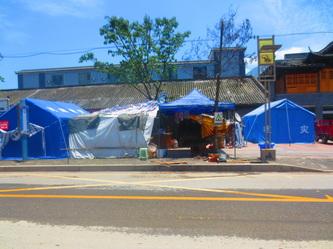
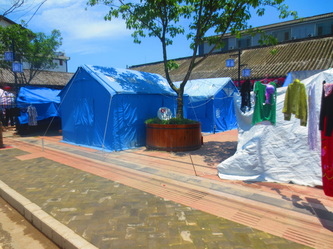
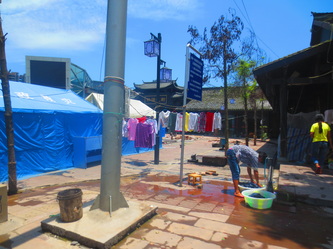
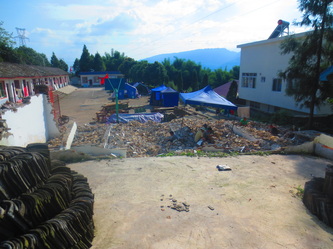
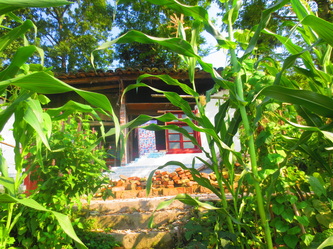
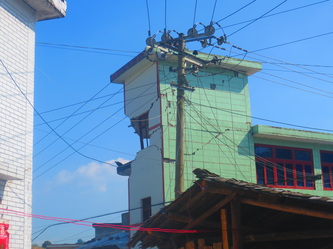
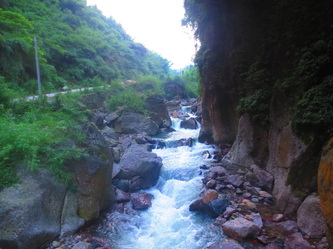
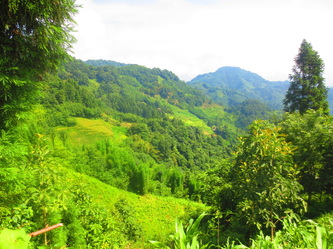

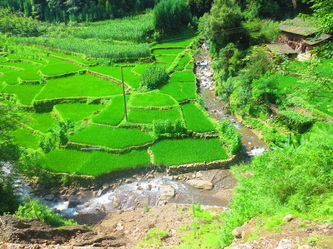

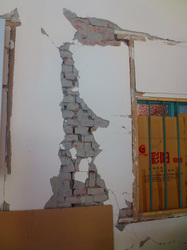
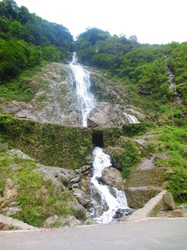

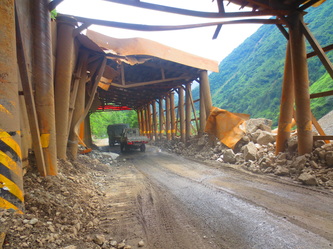
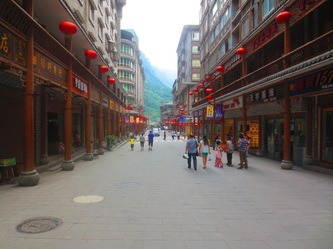
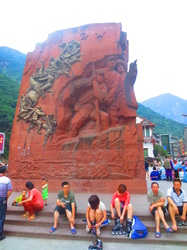
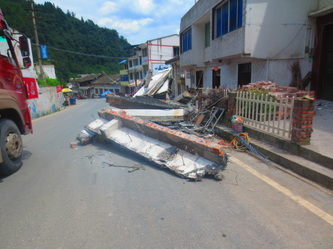
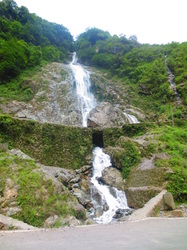
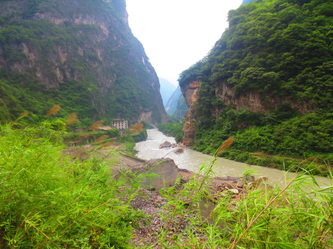
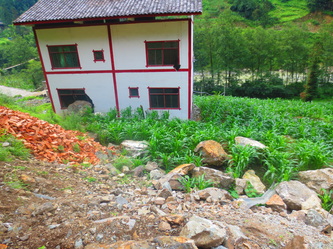

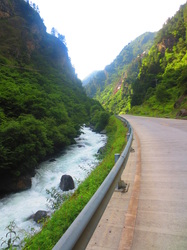

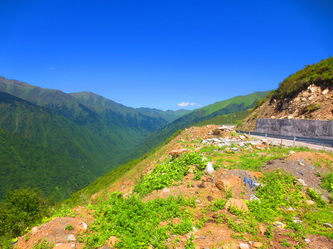
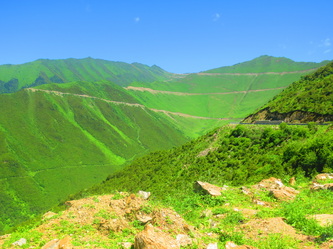


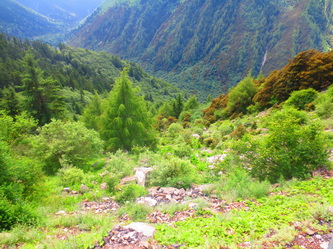
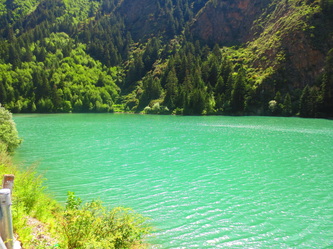
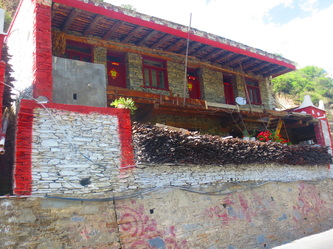


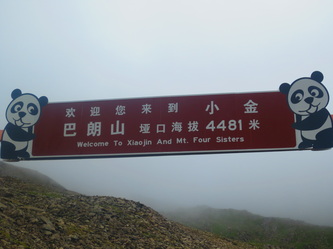
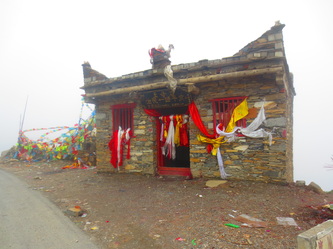
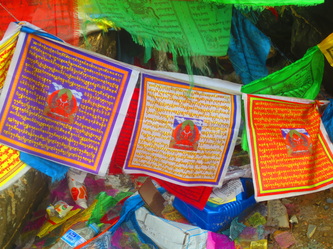




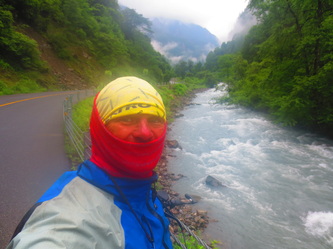

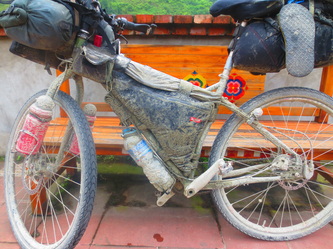
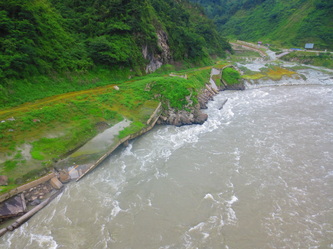
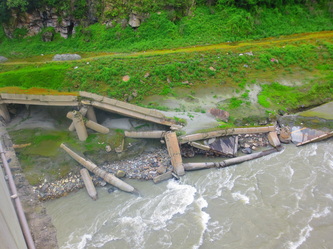

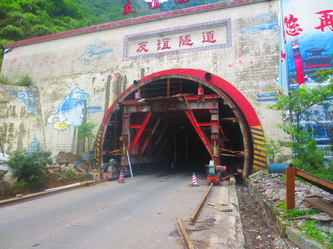
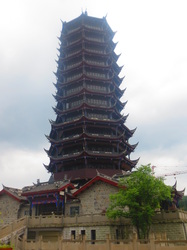
 RSS Feed
RSS Feed